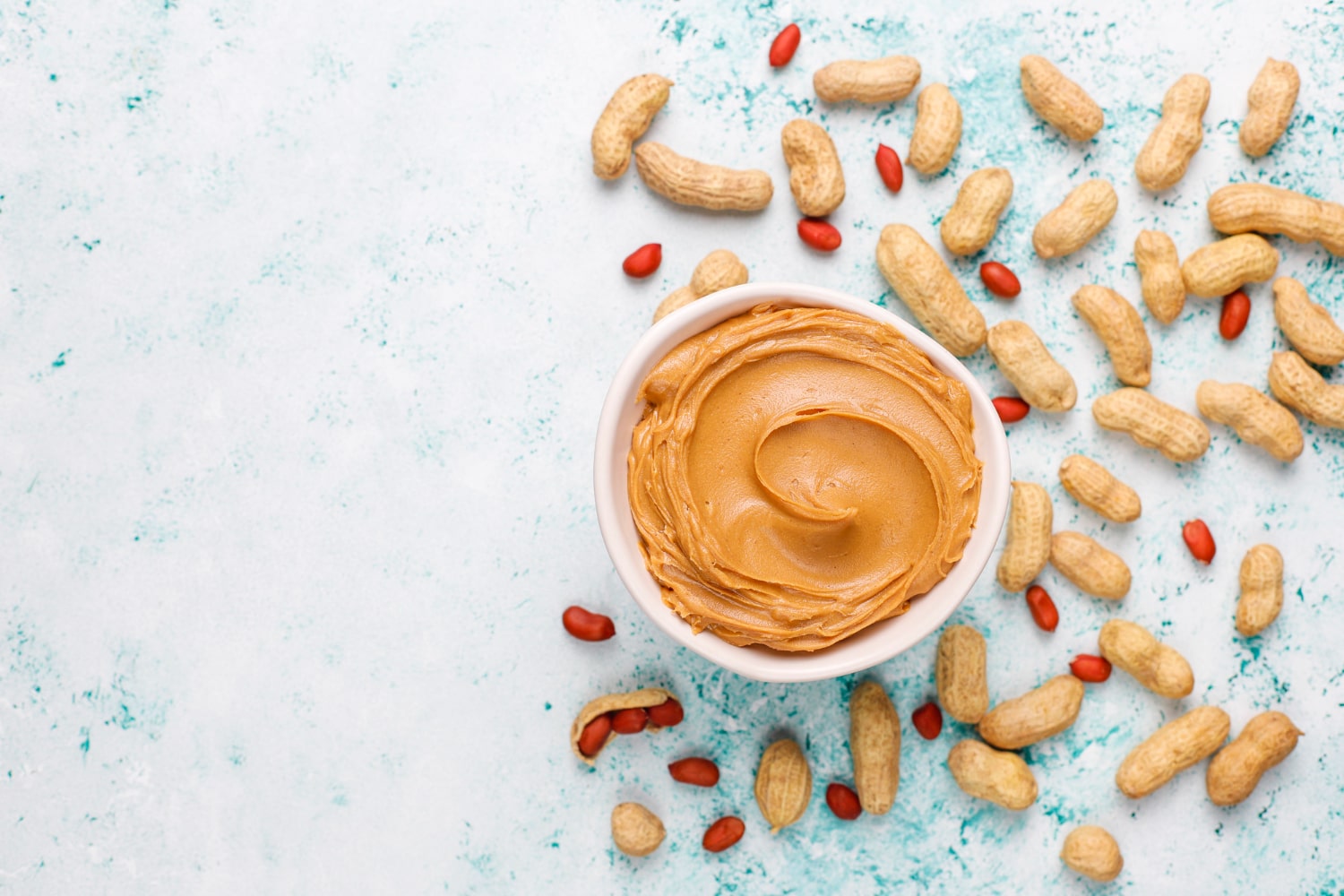Peanut butter is very loved in almost every other household. Whether it be a breakfast or an evening snack, a jar of peanut butter doesn’t hurt on the table. However, whether peanut butter is a liquid or solid is still a debate. As peanut butter has a unique consistency, no doubt it keeps people confused. So today, we are here to solve your mystery. Is peanut butter a liquid?
Is Peanut Butter A Liquid?
Before categorizing peanut butter into liquid, we need to know what is liquid and technically how we can put it in any category.
A liquid has less consistency and flows freely. Also, they have volume but no fixed shape. Some liquids can have higher viscosity, which means they flow more slowly (like honey or molasses), but they still conform to the shape of their container.
Now according to this, peanut butter lies somewhere between solid and liquid. Here is why we say this
- peanut butter has a high viscosity. This means that it flows but doesn’t flow freely like water or oil. However, it does take the shape of a container and can be spread easily.
- Peanut butter has small solid particles too, These solid particles prevent peanut butter from flowing freely like typical liquids.
- As you can easily spread peanut butter, it complicates whether it is solid or liquid.
Is Peanut Butter a Liquid According To TSA Regulations?
Yes! In some airlines, peanut butter is classified as liquid.
The Transportation Security Administration (TSA) classifies peanut butter as a liquid for carry-on luggage purposes. This means that passengers are limited to carrying only 3.4 ounces (100 ml) or less of peanut butter through airport security.
The TSA follows a broad definition of liquids that includes gels, pastes, creams, and other viscous substances that can potentially be spread or smeared.
Does Peanut Butter Behave Like a Solid?
Yes. As it sometimes behaves like a solid too, that’s why there is still a debate about whether it is solid or liquid.
Normally, peanut butter holds its shape unless the pressure is applied. This is very much a solid trait. However, a true liquid would conform to its container’s shape without external force.
Moreover, peanut butter may have a layer of oil that separates, it maintains a consistent, non-liquid state for long periods.

Peanut Butter in Food Science
In food science, peanut butter is often categorized as a non-Newtonian fluid. Non-Newtonian fluids are substances whose flowing properties do not follow Newton’s law of viscosity. Peanut butter becomes more spreadable when pressure is applied, yet it does not flow freely on its own, placing it in this category.
Some people also ask if peanut butter is plastic. Well, it is not plastic itself but has some plastic-like qualities too. It can be shaped or moulded like plastic which distinguishes it from typical liquids.
Some foods similar to peanut butter are
- Honey is a highly viscous liquid that flows slowly.
- Ketchup is another non-Newtonian fluid. It flows more easily after it’s been shaken or squeezed but remains somewhat solid otherwise.
- Like peanut butter, Nutella is a spreadable paste but not considered a traditional liquid.
Use in Cooking and Baking
In the food business, peanut butter is usually used as a spread. It is used as both solid and liquid in different recipes.
In baking, peanut butter behaves more like a solid, as it can hold its shape and is often used in dough or batter. When heated, however, it can soften and melt, resembling a liquid.
When peanut butter is used in sauces or dressings, it behaves similarly to a liquid. It blends smoothly when mixed with other ingredients, such as oil or vinegar, forming a creamy consistency that can be poured or drizzled.
Nutritional Perspective Of Peanut Butter

Peanut butter is rich in fats and proteins that contribute to its spreadable texture. That is why it is used as a spread mostly. While comparing with other foods, it is mostly compared to other spreadable foods rather than with liquids. This shows that usually, it is perceived as more solid than liquid.
Peanut butter is calorically dense and a small portion can provide significant energy. This aligns more with foods classified as solids, where portions are measured in grams rather than millilitres.
Practical Applications in Daily Life
Understanding whether it is a liquid or solid can have practical implications in everyday situations, beyond just travelling or cooking.
- Usually, peanut butter is stored in a jar and can have longer shelf life like solids. Unlike liquids, it doesn’t need special containers or handling.
- When measuring peanut butter, it is usually done in tablespoons or by weight, unlike liquids which are typically measured in fluid ounces or milliliters. This further solidifies its classification as more of a spreadable solid.
Final Verdict about Is Peanut Butter a Liquid?
Well, it is both. Peanut butter is a unique food that falls into both liquid and solid categories. As it has no permanent shape, it is liquid and it is highly viscous so it can be categorized as solid too.
In the kitchen, peanut butter is treated most like a solid and in some contexts, it is categorized as a solid too. So we will leave it to you. Treat peanut butter as a solid or liquid but one thing is a must..it tastes amazing and we can’t get enough of it!


